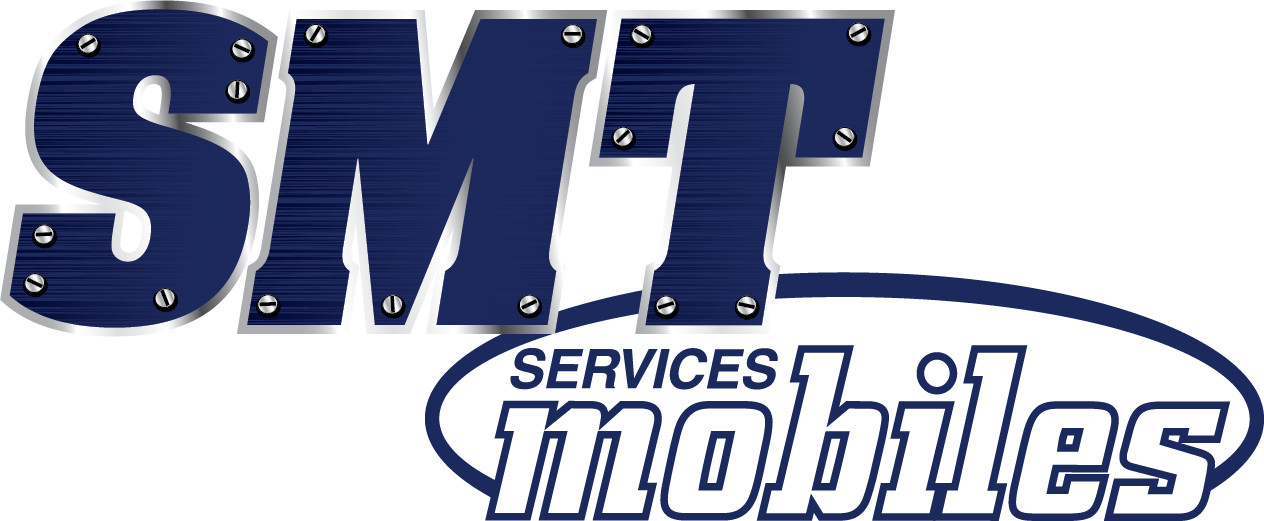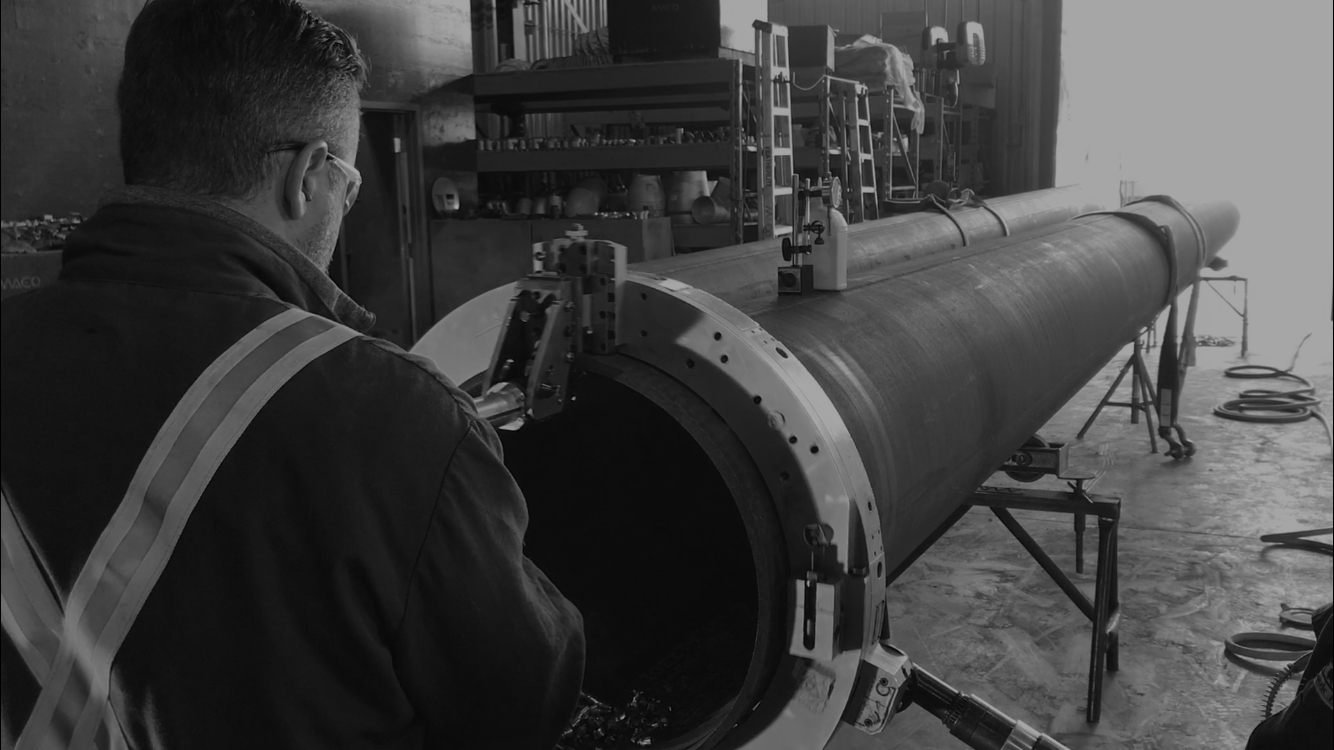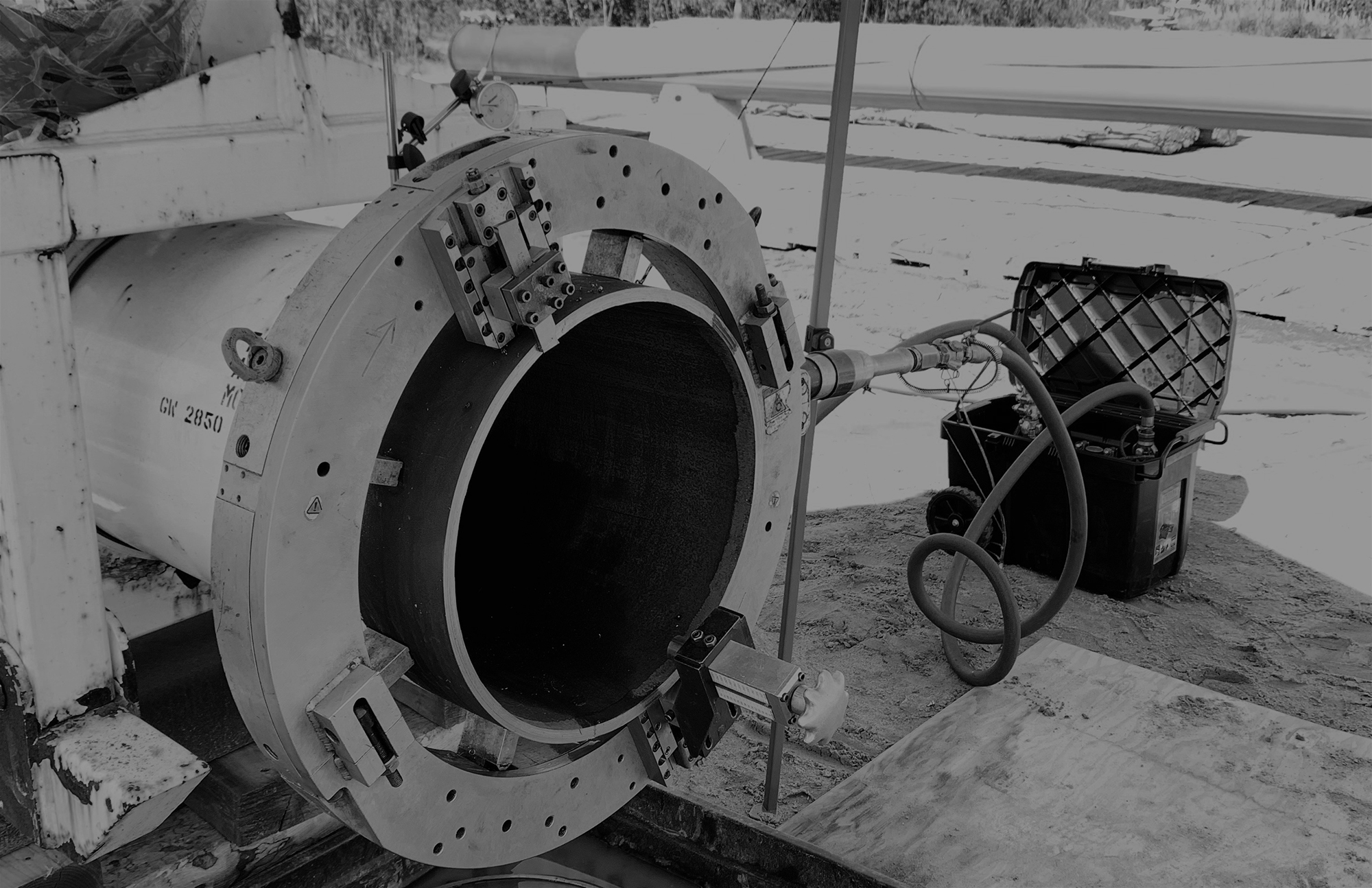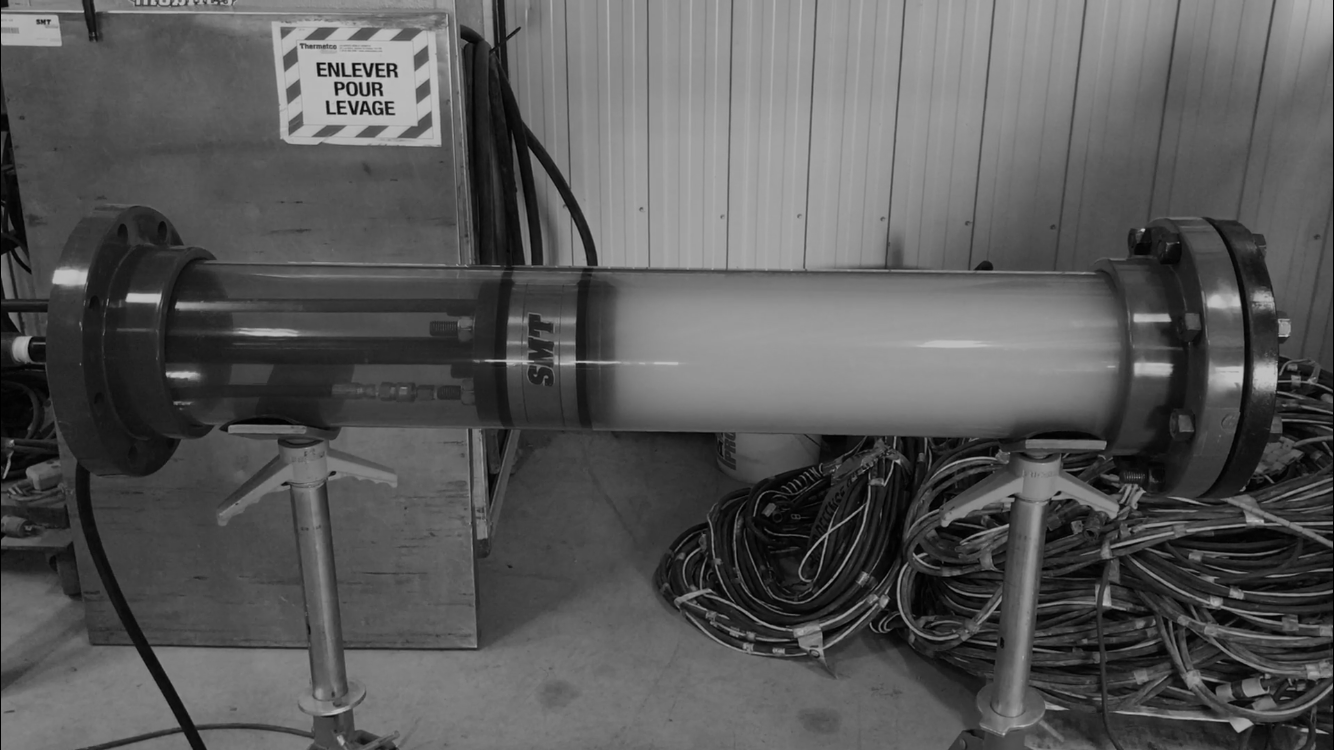 Our Services
Our Services
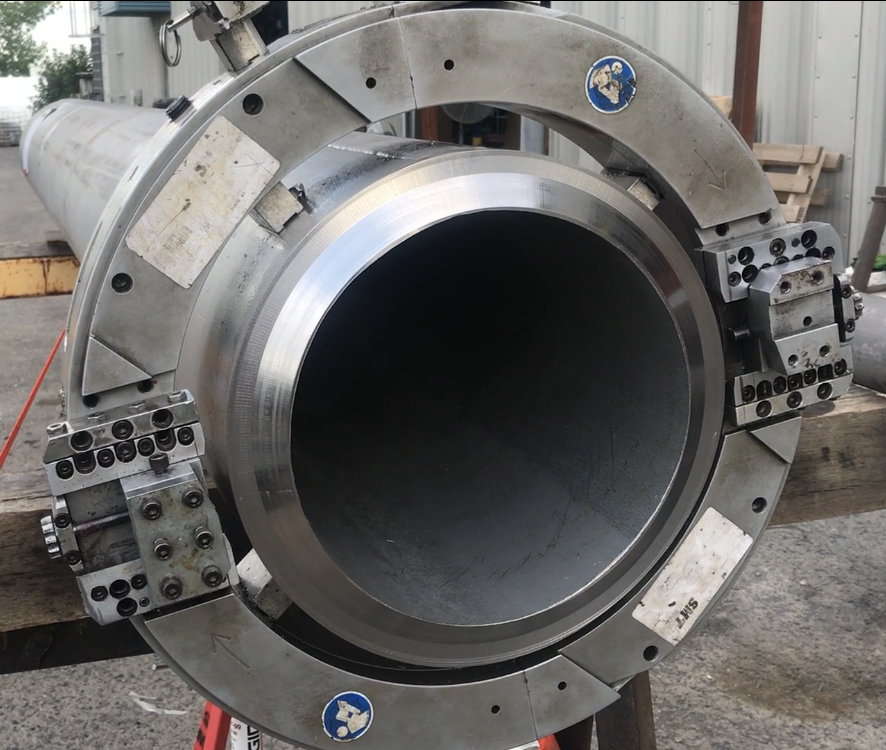
Cold cutting is recognized as the best cutting method for piping.
It offers many advantages:
- Available sizes up to 150 inches
- Cuts up to 7.5” diameter thicknesses
- Does not generate sparks
- Reduces exposure to line content
- Pneumatic, hydraulic or electric supply
- Machine shop quality results directly at your site
Cold cutting: a safe method
Cold cutting allows cutting and beveling of piping without generating a flame or sparks in the installations, thus preventing ignition of residual gases contained in out-of-service lines.
Cold cutting is used to cut piping that contains residual products, including potentially hazardous products. Because the cutting tool is installed on the outside diameter of the pipe to cut it in sections from the outside to the inside, the exposure time of the residual content is then reduced to a minimum, thus protecting the workplace and the staff.
Since cold cutting produces no sparks, a hot work permit may not be required in some situations.
A complete tooling for cold pipe cutting
Our pipe cutters allow the cold cutting of pipes of all types of metals and alloys up to 7.5 inches in diameter of thickness and 150 inches in length. They also allow the cutting of out-of-round pipes, as well as cutting directly on the weld.
Our cold cutting tools can easily be used on different piping systems. Compact and versatile due to its two removable sections, it allows pipe cutting in tight areas. A radial clearance of 6 inches is required.
Services Mobiles SMT also has a wide range of cutting tools for standard and custom cuts or bevels.
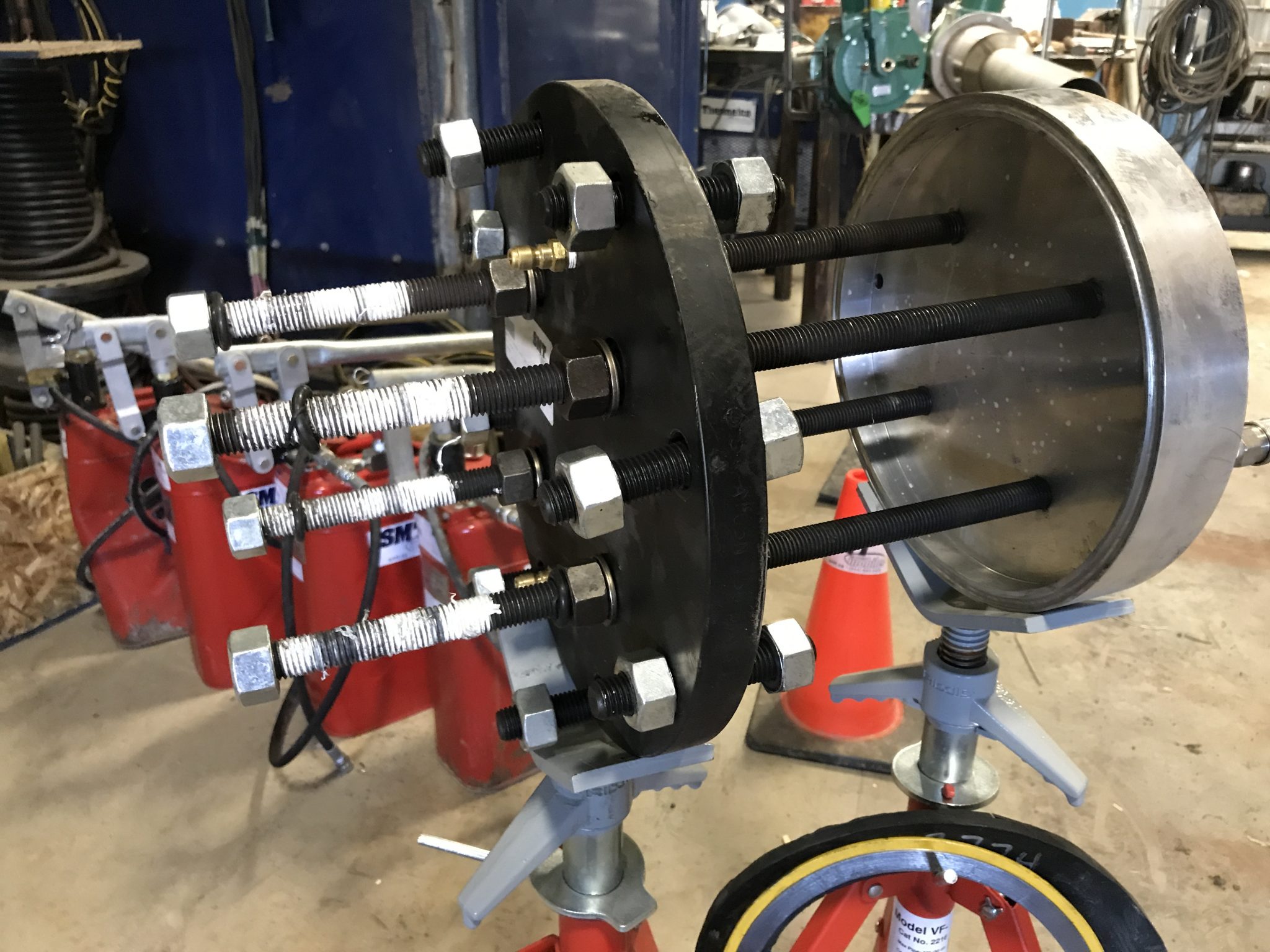
Services Mobiles SMT technicians use highly professional and safe insulation processes and equipment.
- Monitoring of the insulation tightness to allow hot work in complete safety.
- Design of triple steam barriers, including a pressurized barrier.
- Gases and products present in the piping are directed to a safe area away from the hot work.
- A pressure gauge senses pressure variations in the piping system.
- Pressure retention in the event that the piping system becomes pressurized.
Services Mobiles SMT safely insulates the section of piping requiring hot work to protect the equipment, the work environment and the personnel. SMT technicians are able to install the insulating materials that will make your hot work project safe and help minimize downtime for increased operational efficiency.
Benefits of Services Mobiles SMT insulation processes:
Our insulation processes do not require scaffolding or blanking flanges. In addition, they avoid the need for thorough pipe cleaning. Our insulation tools can be installed easily with a compressed air supply, which is no longer required once the insulation tool is set up.
The insulation tools are equipped with a triple steam barrier and seal pressure monitoring system to increase safety during hot work. The insulation tool is installed upstream of the location where the hot work is to be performed. Once the tool is properly installed and the external seals are secured, the medium is pressurized in the external space between the seals.
Once the pressure is established, our technicians ensure that the seal is tight so that no steam can escape from the insulation tool.
These tools are also equipped with a vent line to redirect residual steam away from the hot work area (usually 50 feet). The vent line is equipped with a pressure gauge to monitor upstream pressure variations. Should a pressure variation occur, hot work would be immediately suspended until the situation is rectified.
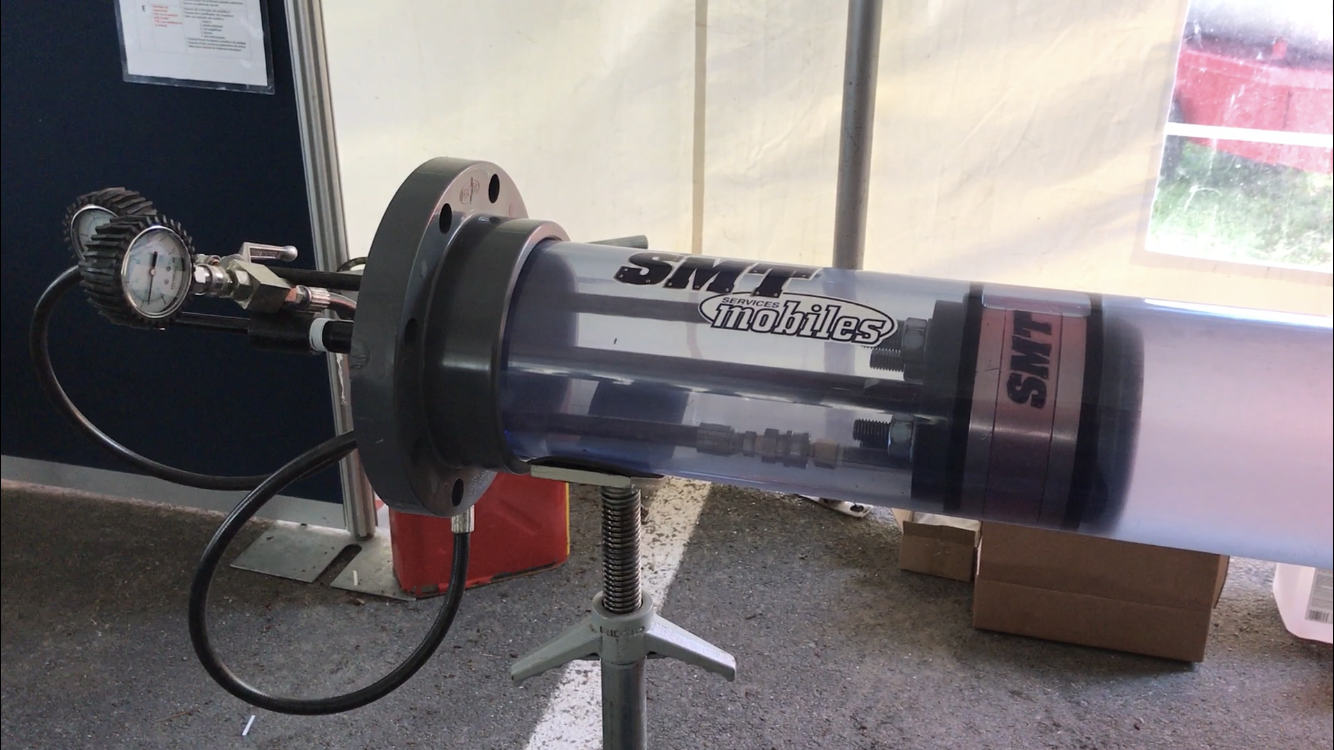
Revolutionary processes for hydrostatic pressure testing
- Our processes eliminate the use of hydrostatic flanges.
- Our lightweight aluminum tooling does not require any lifting equipment.
- Pressure tests up to 10,000 lbs.
- A hydrostatic test on a 120“ diameter joint requires only half a gallon of water.
Our methods reduce the costs and downtime usually required to perform hydrostatic pressure tests.
Traditionally, in order to test the integrity of a single weld, the entire equipment had to be filled with water or glycol and then pressurized. This process is very costly in terms of time and resources. Our processes allow us to perform hydrostatic tests on a 120″ diameter joint with only half a gallon of water.
Our hydrostatic testing processes comply with ASME B31.1 / B31.3 standards, as well as ASME BPV (Boiler and Pressure Vessel Code) Sections V & VIII, and API 510 and 570 specifications.
Our hydrostatic test tools adapt to different equipment:
- Low and high pressure piping, all diameters up to 120 in.
- Modification or addition of flanges
- Pressure vessels
- Manholes or access holes
- Shaped pipes or elbows
- Various connections
We perform hydrostatic tests for all sizes and thicknesses of standard pipes. Our hydrostatic test tools are inserted into the pipe opposite to the joint to be tested by creating two gaskets on each side of the joint. Once the joints are established, the medium (water, glycol or oil) is pressurized between the joints according to the prescribed degree of pressure and is maintained for the time required for the new weld.
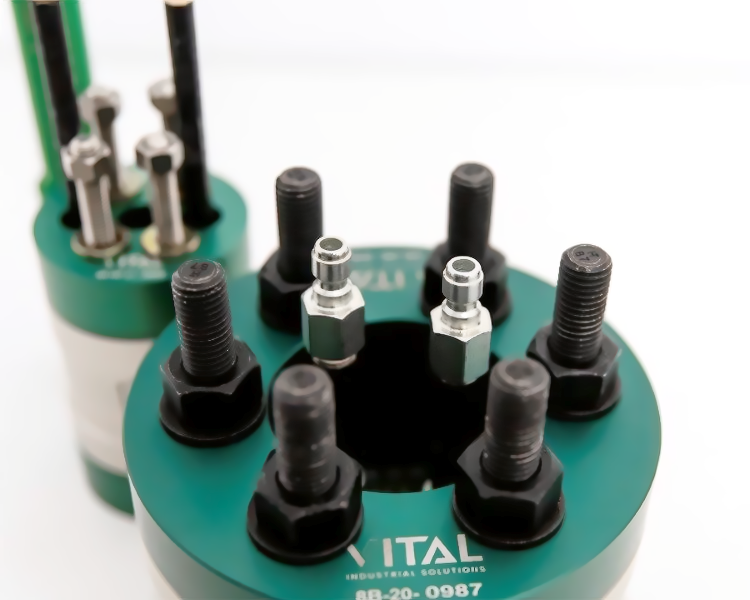
SMT Mobile now offers Vital isolation and hydraulic testing tools for your piping projects. These lightweight and high-performance tools combine isolation and pressure testing, providing a fast and safe solution without the constraints of traditional methods.
Advantages of Vital Tools:
-
Pressure testing up to 5,000 psi for various pipe sizes.
-
Double block and bleed for a sealed and verified isolation.
-
Lightweight and easy to install, no lifting equipment required.
-
Less than 1 liter of water for a 24-inch pipe test.
With their innovative design, Vital tools allow you to quickly test and isolate your installations, even in tight spaces, while reducing costs and downtime.
Safe and Flexible Applications:
-
Testing and isolation on elbows, tees, and pipes of all sizes.
-
Minimized risks and interruptions, ideal for hot work.
Choose the Vital solution to optimize your projects with reliable and efficient tools. Contact us for more information!
 QUOTATION REQUEST
QUOTATION REQUEST 
Let us surprise you with our competitive prices and specialized solutions for your specific needs!
It will be our pleasure to send you an estimate as soon as possible.

